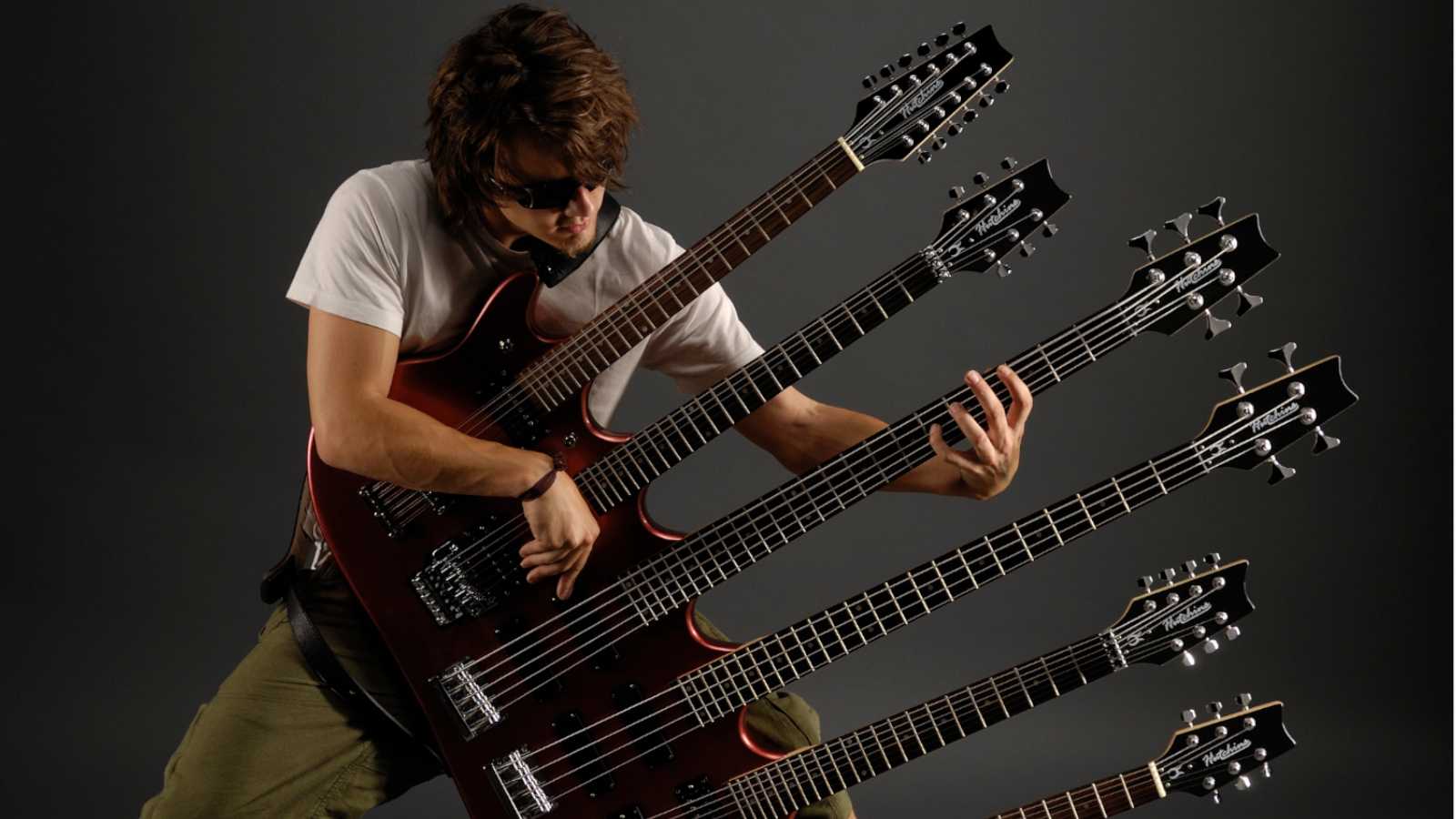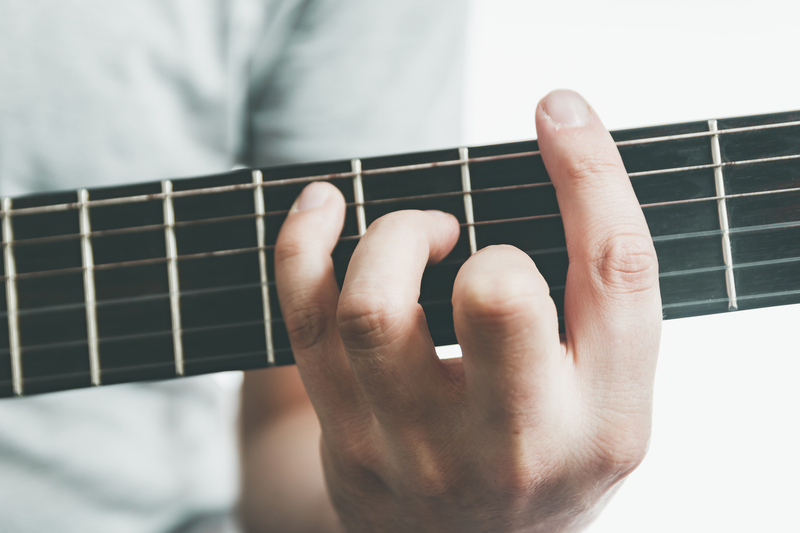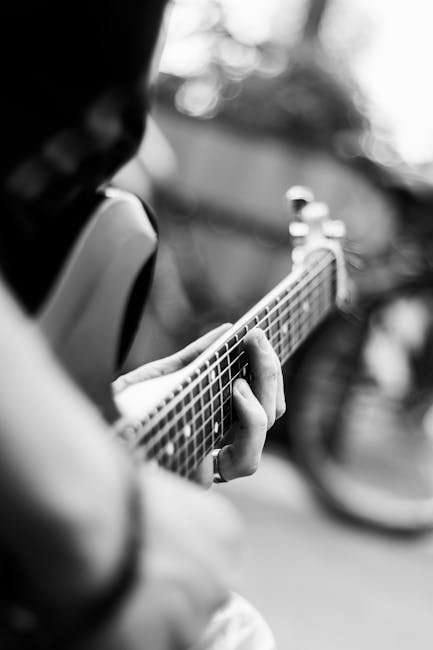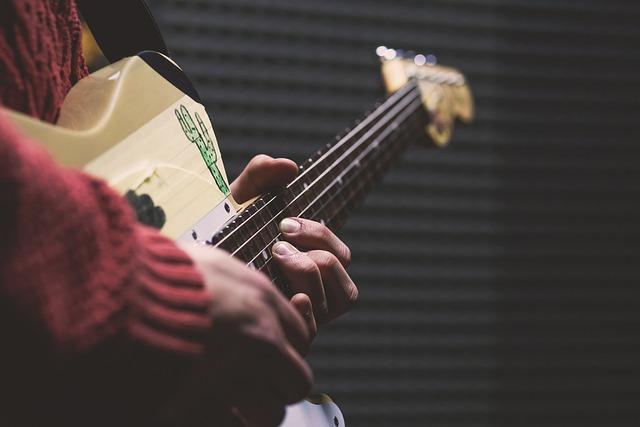Welcome to a world where six strings meet countless frets in a harmonious (or not so harmonious) dance of musical madness. The guitar fretboard may seem like a daunting puzzle for beginners, but fear not! With a little patience, practice, and maybe a touch of magic, you too can unlock the secrets of this six-stringed labyrinth. So grab your pick, tune up your strings, and let’s dive headfirst into the whimsical wonderland of the guitar fretboard.
Contents
- 1 Understanding the Layout of the Guitar Fretboard
- 2 Exploring the Relationship Between Notes and Frets
- 3 Mastering Chord Shapes and Their Movements
- 4 Navigating Through Scales: A Path to Soloing
- 5 The Crucial Role of Muscle Memory in Fretboard Mastery
- 6 Applying Music Theory to Unlock Fretboard Secrets
- 7 The Importance of Practice and Experimentation in Fretboard Mastery
- 8 FAQs
- 9 Rock on and Fret Not!
Understanding the Layout of the Guitar Fretboard
So, you’ve picked up a guitar and realized that the fretboard looks more like a complicated maze than a musical instrument. Fear not, brave musician! Let’s break down the layout of the guitar fretboard in a way that even your pet hamster could understand.
First things first, let’s talk about those pesky metal strips known as frets. Each fret represents a different note that you can play on the guitar. **Think of them as checkpoints on your musical journey**. The higher up you go on the fretboard, the higher the pitch of the notes you’ll play. It’s like climbing a musical mountain, except without the pesky altitude sickness.
Now, let’s chat about those mysterious dots or inlays on the fretboard. **They’re like the stars in a constellation map**, guiding you along your musical path. These dots help you navigate the fretboard and find your way around without getting lost in a sea of strings. So, remember to follow the dots like a musical treasure map!
When it comes to playing chords on the guitar, understanding the layout of the fretboard is crucial. Each string represents a different note, and each fret represents a different pitch. **It’s like a musical game of connect the dots**, but instead of a cute bunny appearing, you create beautiful harmonies that will make your heart sing (and maybe even your hamster too).
Exploring the Relationship Between Notes and Frets
Have you ever wondered what the secret ingredient is to creating beautiful music on a guitar? Well, look no further than the relationship between notes and frets! These two elements are like peanut butter and jelly – they just belong together.
First off, let’s talk about notes. These little guys are the building blocks of music. Each note has its own unique sound and personality, kind of like a musical emoji. And when you combine different notes together, you can create melodies that will make your heart sing (or at least tap your foot).
Now, onto frets. These metal bars may seem like simple dividers on the neck of a guitar, but oh no, they are so much more. Frets are like the traffic signs of the guitar world, guiding your fingers to the right spot to play each note. They help you navigate the musical highway with ease and precision.
So, next time you pick up your guitar, remember the sacred bond between notes and frets. Embrace their harmonious relationship and who knows, you might just unlock the key to musical greatness!

Mastering Chord Shapes and Their Movements
Now that you’ve got the basics of chord shapes down, it’s time to take your skills to the next level! is like leveling up in a video game – you’re about to unlock a whole new world of possibilities!
First things first, make sure you have your trusty guitar in hand and a good sense of humor – because let’s face it, playing guitar is all about having fun! Now, let’s dive into the world of chord shapes and their movements.
One of the coolest things about mastering chord shapes is understanding how they can move up and down the fretboard. It’s like a secret code that unlocks endless combinations and chord progressions. So, get ready to experiment and see where your fingers take you!
Don’t be afraid to get creative with your chord shapes – mix and match, experiment with different finger placements, and most importantly, have fun! Remember, practice makes perfect, so keep plucking away until you’ve mastered those chord shapes like a true guitar hero!

So you’ve mastered the basics of playing guitar and are ready to take on the world of soloing. Congratulations! Now, it’s time to dive into the wonderful world of scales. But don’t worry, navigating through scales doesn’t have to be as intimidating as it sounds. Just follow these fun and quirky tips below:
First things first, familiarize yourself with the major scale. This trusty scale is like the Swiss Army knife of scales – it can be used in a variety of musical situations. Practice playing the major scale in different positions on the neck of your guitar to get a feel for its sound and fingerings. Trust us, it will come in handy later on.
Next, get to know the minor scale. This dark and brooding scale is the major scale’s edgy cousin. Experiment with different ways of playing the minor scale, such as using slides, hammer-ons, and pull-offs to add some flavor to your solos. The minor scale is a great tool for adding emotion and drama to your playing.
Now that you’ve got a handle on the major and minor scales, it’s time to explore some other scales to add some spice to your solos. Try experimenting with scales like the blues scale, pentatonic scale, and diminished scale. These scales can add some interesting flavors to your playing and help you stand out from the crowd. Remember, soloing is all about expressing yourself and having fun, so don’t be afraid to get creative with your scales!

The Crucial Role of Muscle Memory in Fretboard Mastery
Now, imagine this: you’re shredding on your guitar, moving your fingers up and down the fretboard with lightning speed, hitting every note with perfect precision. It’s like your fingers have a mind of their own, effortlessly navigating the frets as if they were born to do it. How is this possible, you ask? Well, my friend, the answer lies in the magical world of muscle memory.
**Muscle memory** is like having a cheat code for your fingers. It’s the ability of your muscles to perform a specific task without conscious effort, thanks to repetitive practice and training. When it comes to mastering the fretboard, muscle memory is your best friend. It’s the reason why seasoned guitarists can play complex solos flawlessly, while beginners struggle just to get their fingers in the right position.
So, how do you harness the power of muscle memory to conquer the fretboard? Well, it’s simple, really. **Practice, practice, practice**. The more you train your fingers to move accurately and efficiently on the fretboard, the stronger your muscle memory becomes. Whether it’s running scales, practicing chord progressions, or jamming to your favorite songs, every session contributes to building that muscle memory muscle.
And here’s a little secret: muscle memory is a lazy beast. Once it learns a task, it doesn’t like to forget it. So, even if you take a break from playing for a while, your muscle memory will remember all the hard work you put in. It’s like riding a bike – you never really forget how to do it. So, keep practicing, keep training those fingers, and watch as your fretboard mastery reaches new heights thanks to the power of muscle memory.
Applying Music Theory to Unlock Fretboard Secrets
Do you ever feel like your guitar playing is stuck in a rut? Are you tired of playing the same old chords and scales over and over again? Well, fret not (pun intended), because applying music theory can help you unlock the secrets of the fretboard and take your playing to the next level!
By understanding the theory behind chords and scales, you can start to see patterns on the fretboard that you never noticed before. Suddenly, those confusing chord progressions and scale shapes will start to make sense, and you’ll be able to navigate the fretboard with ease.
Once you start applying music theory to your playing, you’ll be able to improvise more confidently, write your own songs, and even impress your friends with your newfound knowledge. Who knows, you might even become the next guitar hero!
So, grab your guitar, brush up on your music theory knowledge, and get ready to unlock the fretboard secrets that have been hiding in plain sight. Your fingers will thank you, and your audience will be amazed at how effortlessly you can navigate the fretboard like a pro.
The Importance of Practice and Experimentation in Fretboard Mastery
Mastering the fretboard is like trying to navigate a maze with your eyes closed – it’s tough, confusing, and you’ll probably end up lost… unless you practice and experiment like a mad scientist! Practice makes perfect or at least will prevent you from playing like a tone-deaf cat on a hot tin roof.
Experimentation is the key to unlocking the mystical secrets of the fretboard. You have to be willing to try new things, make mistakes, and take risks. It’s like being a mad scientist in a lab, mixing different chemicals together to create a mind-blowing, guitar-shredding masterpiece. Who knows, you might stumble upon a killer riff that will make even the most seasoned guitarists jealous!
Without practice and experimentation, you’ll be stuck in a never-ending loop of playing the same old chords and scales like a broken record. But with a little determination and a sprinkle of creativity, you can transform yourself into a fretboard wizard, conjuring up melodies that will make angels weep with joy. So grab your guitar, roll up your sleeves, and get ready to rock the fretboard like never before!
FAQs
Why is the guitar fretboard so confusing?
Well, imagine trying to navigate a maze blindfolded – that’s pretty much what it feels like when you’re first starting out. But fear not, with some practice and patience, you’ll soon start to see the light at the end of the fretboard tunnel!
How can I memorize the notes on the fretboard?
One word: mnemonics! Come up with silly phrases or acronyms to help you remember the order of the notes. For example, Eddie Ate Dynamite, Good Bye Eddie for EADGBE. Just don’t blame us when you start randomly shouting out “Eddie Ate Dynamite” in public!
What are some tips for improving my fretboard navigation?
Practice, practice, practice! Set aside some dedicated time each day to work on your fretboard skills. Try exercises like playing scales or arpeggios in different positions to really get comfortable with moving around the fretboard.
How can I make sense of scales and chords on the fretboard?
Think of scales and chords as the secret codes to unlocking the mysteries of the fretboard. Once you understand the patterns and shapes associated with them, you’ll be able to play any song or riff with confidence!
Any advice for beginners struggling with the guitar fretboard?
Don’t get discouraged! Remember that even the greatest guitarists started out as clueless beginners at some point. Keep at it, stay positive, and soon enough you’ll be shredding like a pro!
Rock on and Fret Not!
Congratulations, you’ve now unlocked the secrets of the guitar fretboard and are well on your way to becoming a rockstar in no time! As you continue to practice and master these intricacies, remember to have fun and never be afraid to experiment with new techniques and styles. So go forth, strum those strings, and let your inner guitar god or goddess shine! And always remember, when in doubt, just keep shredding! 🎸✨



